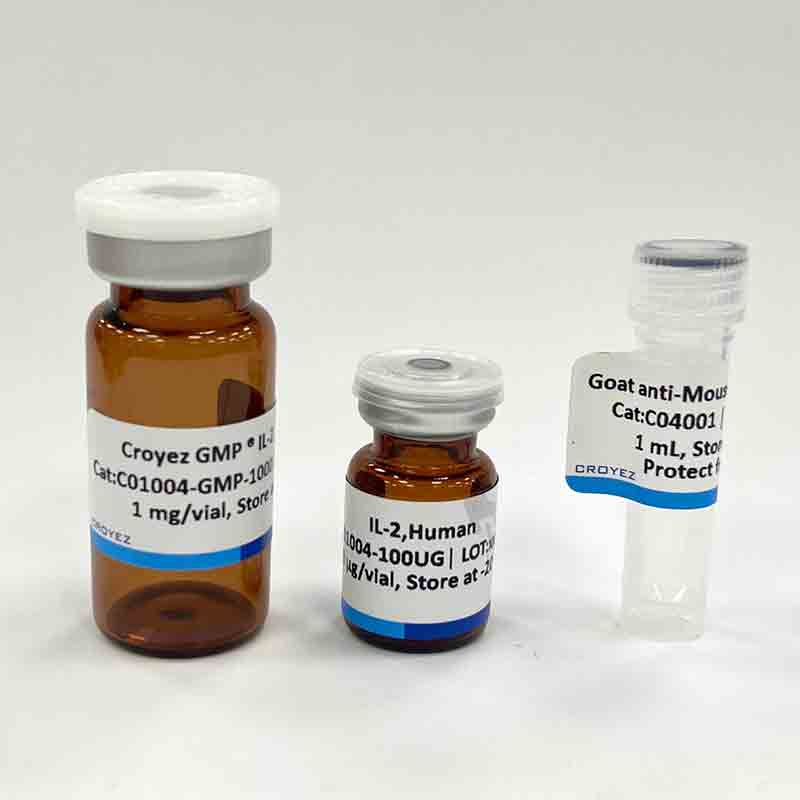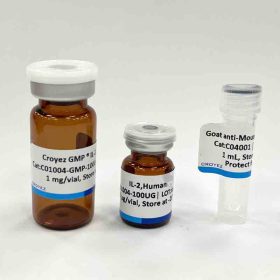LIGHT is a member of the TNF family of ligands, and can conduct signaling through the herpes virus entry mediator type A receptor (HVEM, TNFRSF14), LTβR, or binding to a decoy receptor, DcR3. LIGHT generally expresses in splenocytes, activated PBL, CD8+ tumor infiltrating lymphocytes, granulocytes, and monocytes. LIGHT can also activate NF-κB, to co-stimulate the activation of lymphocytes and induce apoptosis in certain human tumor cells.
Sequence:
MRLHQRLGDIVAHLPDGGKGSWEKLIQDQRSHQANPAAHLTGANASLIGIGGPLLWETRLGLAFLRGLTYHDGALVTMEPGYYYVYSKVQL
SGVGCPQGLANGLPITHGLYKRTSRYPKELELLVSRRSPCGRANSSRVWWDSSFLGGVVHLEAGEEVVVRVPGNRLVRPRDGTRSYFGAFM
V with polyhistidine tag at the C-terminus
Source:
Escherichia coli
Endotoxin Test:
<0.1 EU per 1 μg of the protein by the LAL method.
Activity:
Measure by its ability to induce cytotoxicity in HT-29 cells. The ED50 for this effect is <2 μg/mL.
Purity:
>98% as determined by SDS-PAGE. Ni-NTA chromatography
Formulation:
The protein was lyophilized from a solution containing 1X PBS, pH 7.4.
Reconstitution:
It is recommended to reconstitute the lyophilized protein in sterile H2O to a concentration not less than 100 μg/mL and incubate the stock solution for at least 20 min to ensure sufficient re-dissolved.
Storage:
Lyophilized protein should be stored at -20°C. Upon reconstitution, protein aliquots should be stored at -20°C or -80°C.
Note:
Please use within one month after protein reconstitution.





